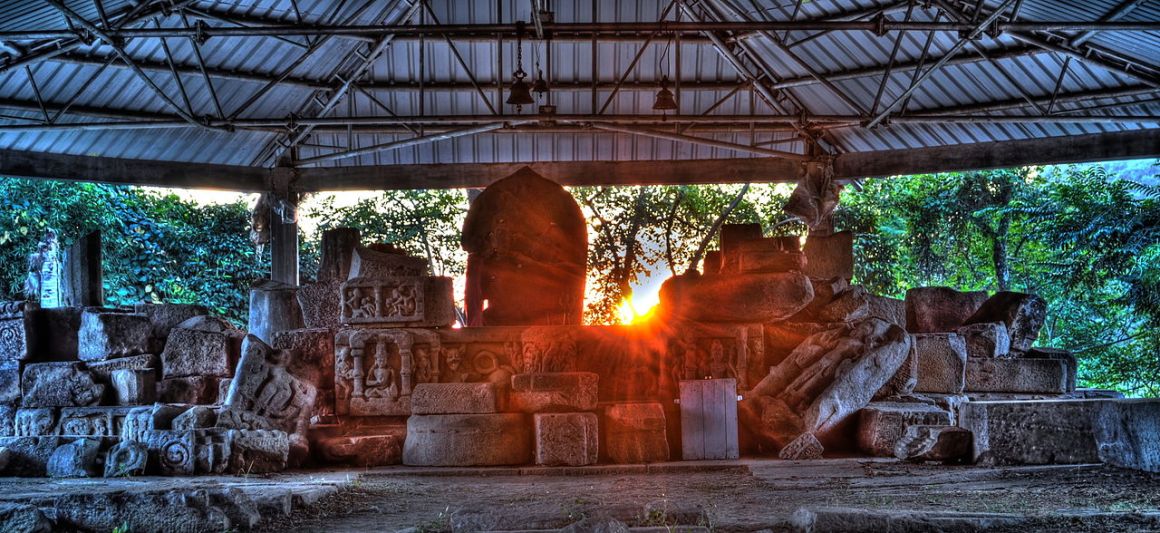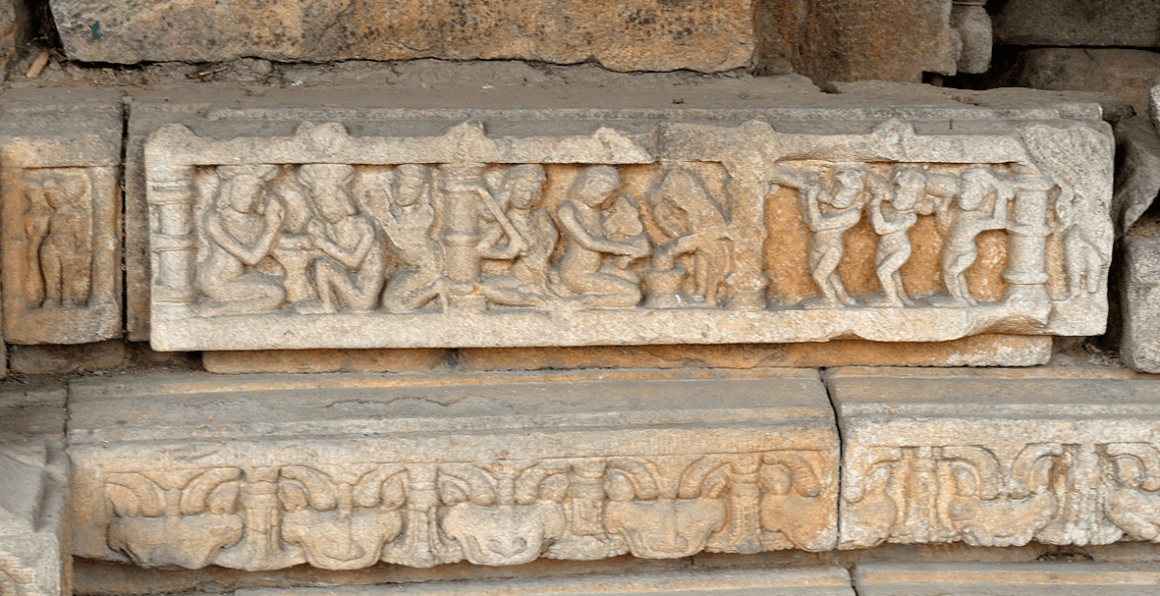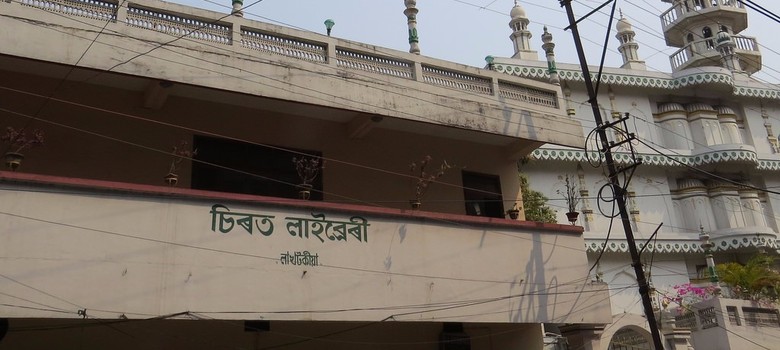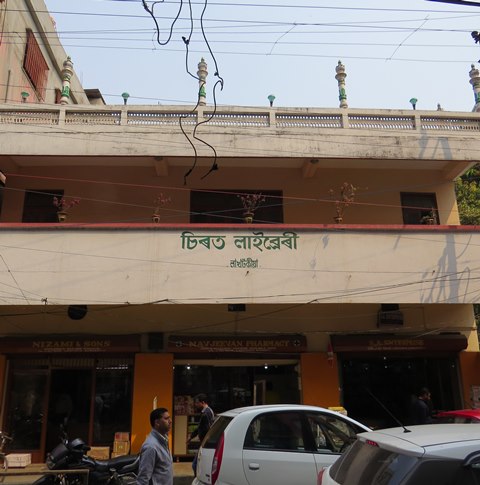The ancient site of the Madan Kamdev temple was once preserved by a Muslim. The fact that this has been forgotten is a sign of a larger erasure that we should be concerned about.

Over a century ago, the incisive colonial historian Edward Gait, who compiled the first compendium of history in modern Assam lamented the fact that “…there is probably no part of India regarding whose past less is generally known. In the histories of India, as a whole, Assam is barely mentioned, and only ten lines are devoted to its annals in the historical portion of Hunter’s Indian Empire.”
Despite the passage of a hundred years, Gait’s observations on the narrativisation of Assam in popular Indian historiography remain true as ever. Timothy Garton Ash writes that recorded history is a history of memories. And when memories are being deliberated upon, can forgetting be far away? The act of peeking into the silences of historical narratives that have developed over centuries in Assam, or anywhere else in the world, becomes a crucial intervention.
Some such silences are palpably becoming more visible in the culturescape of poll-oriented Assam. The state has often been termed as ‘Sankardev-Azaan Ore Dexh’ – the land of Sankardev and Azaan Fakir, two religious and cultural saints of medieval Assam responsible for altering its socio-religious landscape. Srimanta Sankardev inspired the Bhakti movement, while Azaan Fakir established Sufi Islam here. Renowned Assamese geographer and social scientist Mohammed Taher observed that the syncretic relationship between Sankardev’s Vaishnavite religious traditions and Azan Fakir’s Sufi Islam was one of the main reasons that Muslims became a part of Assamese society.
These syncretic traditions have been an intrinsic part of Assamese society, including its political and cultural milieus. They are also reflected in the case of Ismail Siddiqui, one of the main commanders of the great Ahom general Lachit Barphukan. Siddiqui defeated the Mughal Army led by Raja Ram Singh in the historic Battle of Saraighat in the 17thCentury. For his bravado, Siddiqui was given the honorific Bagh Hazarika, or the Tiger commanding a thousand soldiers.
Religious sites have also been a significant marker of this syncretism. There have been many instances where Hindu religious sites have been taken care of by Muslims for years and Muslim sites have had been under the care of Hindus. In fact, Azan Fakir who ventured into Assam around 1636 AD, was known to have married a high-status Ahom woman. His dargah was constructed by the Ahom King Swargadeo Churamfa as an act of penance, at Saraguri Chapori in Sivasagar District close to the Ahom capital.
Madan Kamdev
There are many such stories across the Brahmaputra valley in Assam, and one of them is found in the history of the ancient temple site Madan Kamdev, the mythical place where Kamdev supposedly resurrected himself after being burnt to ashes by Shiva. These magnificent ruins lie 40 kilometres outside Guwahati.
Though the site has been dated to the 11-12th century CE, new scholarship suggests that the place may have been even older. Construction may have started with the ruler Vanamalavarmadeva of the Salasthambha dynasty in the 9th century, and continued by the succeeding Pala dynasty up to the 12th century.
The site is the capital of ancient Assam, which was known as Kamrupanagara. Even today, one of the major districts in Assam which encompasses this area is known as Kamrup, and those staying in this district in Lower Assam are generally referred to as Kamrupiyas.
Though the temple is dedicated to Uma-Maheshwar, the site of Madan Kamdev has often been referred to as the Khajuraho of the east due to the numerous erotic sculptures dotting the expansive landscape. Madan Kamdev finds mention in the important 10th century Hindu text, Kalika Purana and in the 16th century Tantric text from Assam, Yogini Tantra. However, this stone temple stretching to around half a km was subsequently destroyed by various earthquakes over the centuries, starting with the earthquake of 1548 CE.

The ruins of Madan Kamdev were first excavated in 1855 by the colonial military officer, Captain Dalton. But not much information is available on the kind of preservation or conservation efforts that were undertaken post this discovery. However, records do show that a Muslim land official of the colonial administration, Niyamat Ali Mondol, took the responsibility of preserving this ancient temple. Niyamat Ali belonged to the nearby Piyolikhata Village, around 2 kms from the temple site. He was given the title ‘Mondol’ by the British administration, which meant that he measured land in order to calculate revenue for the colonial administration, and also arbitrated land disputes.
Very little is known or written about Niyamat Ali Mondol, but what is significant is that he became the first doloi or chief administrative officer of Madan Kamdev for 10 years, starting in 1901. The upkeep of Madan Kamdev, as with a lot of similar temple sites was administered by a committee made of locals till either the Government of India or the Assam government or the Archaeological Survey of India (ASI) took over the responsibilities of conservation and restoration. It was only as recently as 1977 that the directorate of archaeology in Assam officially took over the responsibility of the upkeep of this ancient site.
Mondol’s role
When the temple faced a severe scarcity of funds, Mondol paid its khazna or land tax in his individual capacity for about four years. With such a history, one would expect the temple to hold information or the villages around the temple to offer some narratives, oral or otherwise. However, as Garton-Ash writes, ‘…writing history is nothing less than an infinity of individual memories of any person or event’. One can definitely discern a new form of historiography in the making – one that is complicit in the erasure of certain persons or events or even the linear chronological history of a tangible space. The ASI museum at the site of the temple does not offer any narrative on who discovered the site, how was it maintained, and who was associated with the site in modern history.
Mondol’s descendants who still live close to Madan Kamdev feel that there is an effort to do away with this part of the history of the temple, and in the history of Assam in general. ‘In the early 1990s, the temple officials including the thendoloi came to our house and took away the only surviving portrait that we had of Mondol, as they wanted to honour his efforts and install the portrait at the temple office,’ says his grandson, 86-year-old Bhola Chowdhury. ‘But the portrait went missing after a few years. We have tried locating it as that was our only tangible memory of him, but unfortunately we have no trace of it,’ he rues.
Kamal Nayan Patowary, an assistant professor of history whose doctoral thesis was on Madan Kamdev, offers an interesting anecdote on Mondol: ‘The locals did tell me about a person called Mondol who was the first doloi of this temple. But apparently, there was some issue with the locals and he was removed from the post of doloi soon (after). Hence, in anger, he took a tamrapatra or copper inscription from the temple, and threw it into a pond. According to the locals, the history of the temple has thus been lost. I did try to excavate the inscription during my doctoral research, and even employed divers to search in the pond, but it was a futile exercise.’
This narrative is however confounded by the fact that Mondol’s son, Chand Mohammed Chowdhury Kamrupi himself was part of the temple committee for about five years after the death of his father. Chowdhury was also part of the temple committees of other ancient temples in the region such as Goreswar, Pingleswar, and the 200-year-old Patrapur mosque. He was a prominent citizen of the region, who was bestowed the title Kamrupi by the locals because of his avowedly secular nature and love of the land. Kamrupi was also a well-known political figure, as well as a published writer and poet. He authored the book Vivaah Chitra in 1936, and also had his essay Purdah published in the journal Chetana which was edited by Ambika Giri Rai Chowdhury, popularly known as Assam Kesari.
Forgetting
In the temple precinct, there is also a palpable reluctance by the current trustees to talk about the modern history of Madan Kamdev. There is no awareness of the histories or narratives associated with sites such as these among devotees, or even in the villages nearby. Historian Will Pooley exhorts us to engage with the absent narratives and corroborate the voices that are heard.
In 2016, the state is facing elections which many term as a game-changer in the political landscape of Assam. Perhaps this is also a historical moment to critically examine the larger absences that are being created. It is a narrative or an absent presence that seems to haunt the Khilonjia or local Muslim community of Assam, which has always identified itself with its ethnic rather than religious identity.
History and memory are always interlinked. Changing memories involve the process of what Garton Ash has called ‘slow fading or forgetting.’ Whether this forgetting can be contained and lost memories retrieved is a question that the Assamese community as a whole may want to ponder upon this year.
The author is a PhD research scholar at the School of Arts and Aesthetics, Jawaharlal Nehru University.
source: http://www.thewire.in / The Wire / Home> Communities> by Shaheen Ahmed / April 10th, 2016










